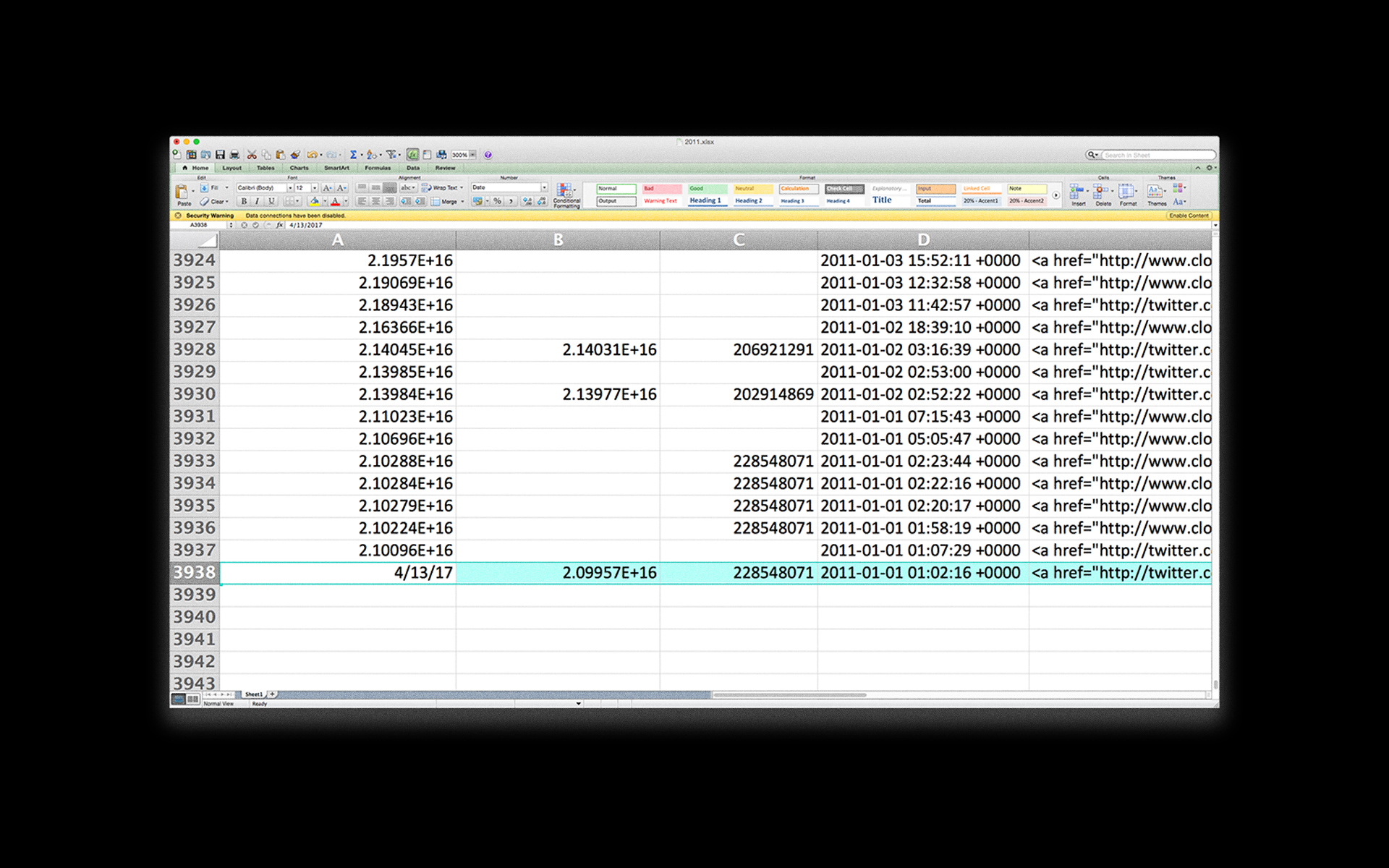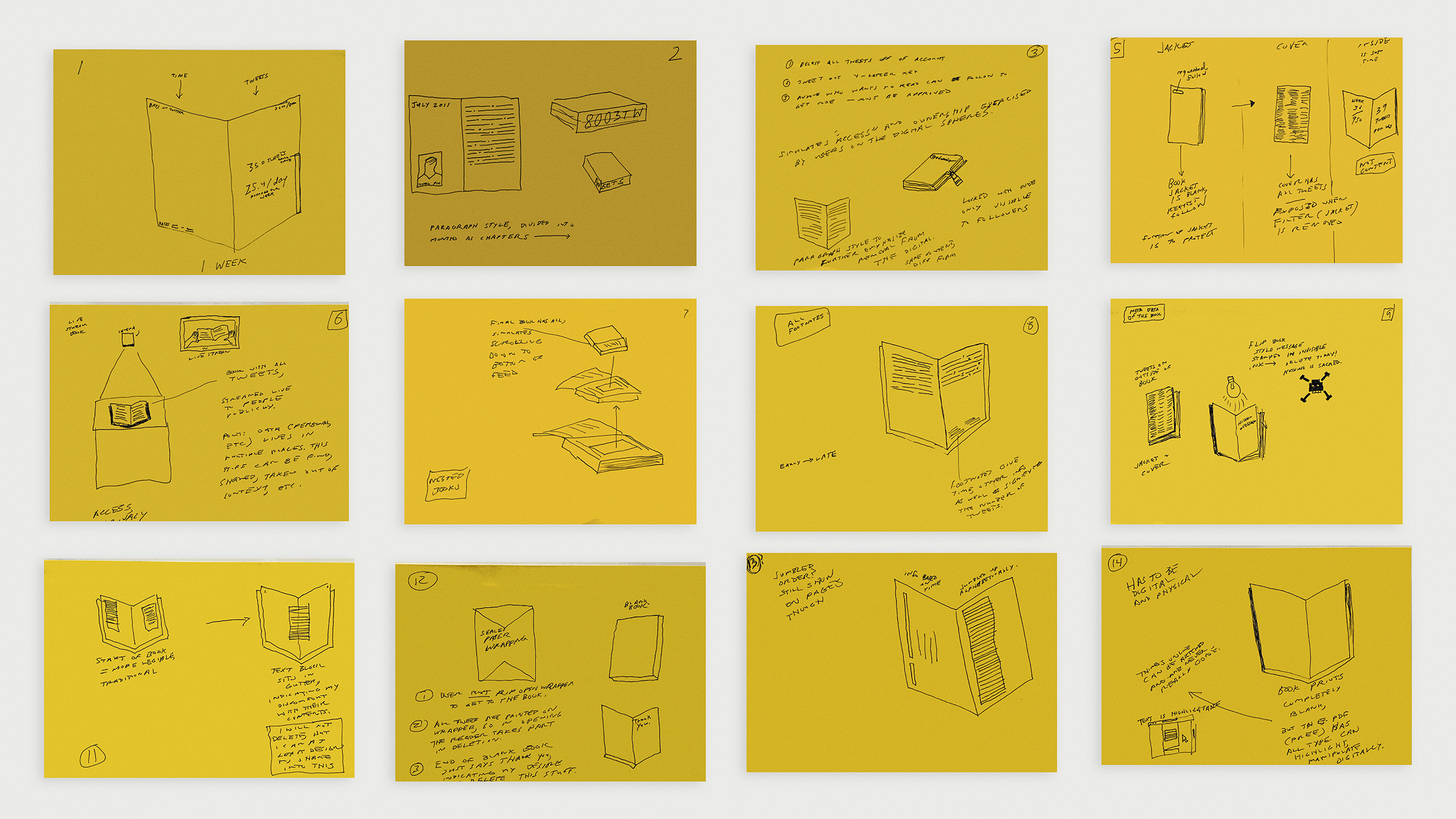Self
BFA Thesis
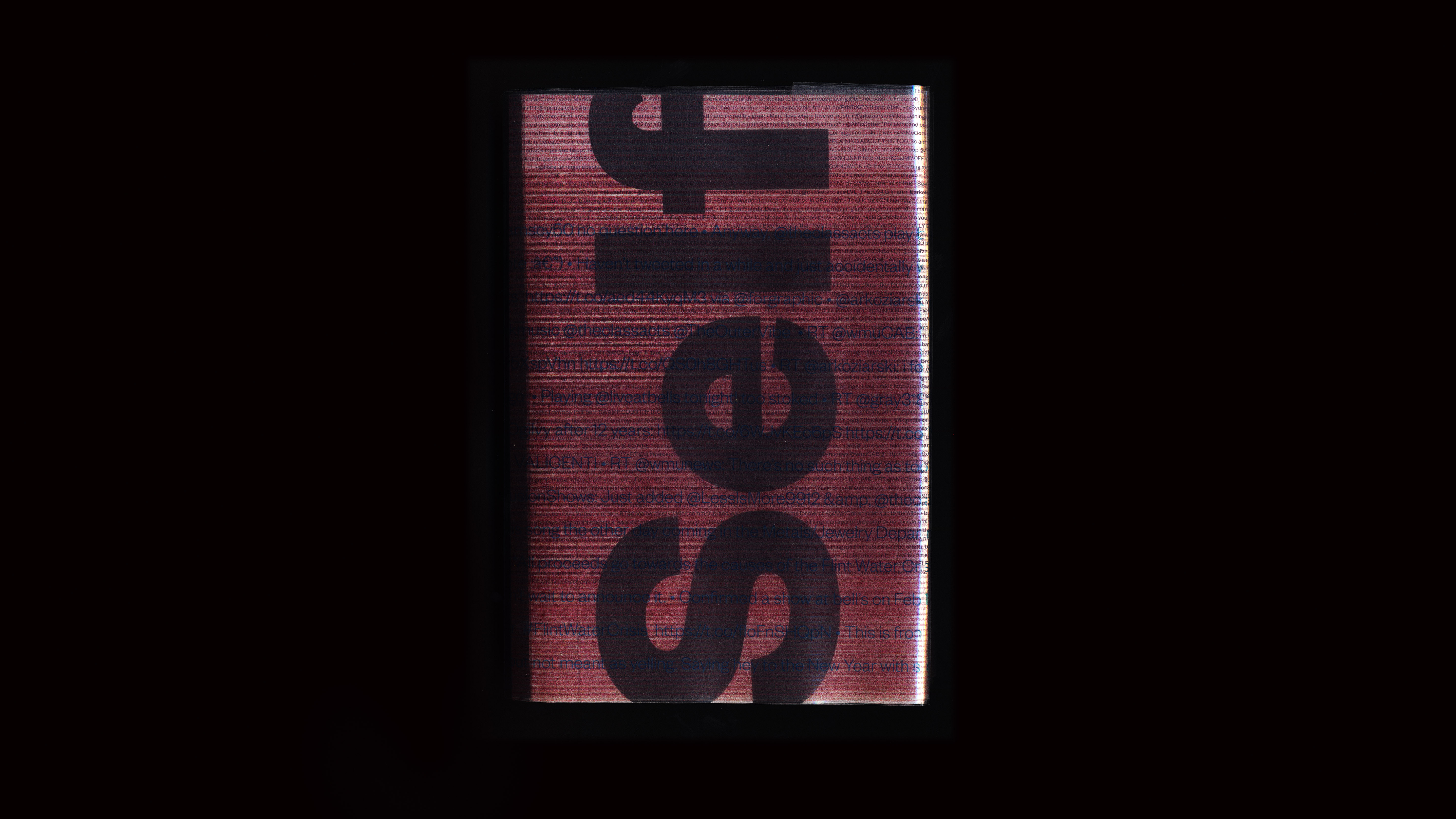
Completed Apr. 2017 in fulfillment of the requirements of BFA degree in Graphic Design
Hand-bound book
8,419 tweets
Thesis Advisor:
Ryan Lewis
Hand-bound book
8,419 tweets
Thesis Advisor:
Ryan Lewis
The use of sites like Twitter, Facebook, Instagram, and Snapchat is rooted in nowness. Most users rarely think about the long-term aspects of their relationship with the networks to which they belong, instead focusing on an ever-refreshing interface filled with fresh content. But what happens to this content when it is removed from its familiar digital context? Do the archived interactions, updates, tweets, and other pieces of our digital histories take on new meaning when placed onto a physical substrate? Using the form of the book and my personal Twitter archive, this project, my undergraduate thesis completing my BFA in Graphic Design, addresses my own digital history, looking specifically at the value, volume, and narrative capabilities of the things we do and say on the internet.

Detail of the book's transparent dust jackets. There are seven layers; one for each year of my Twitter account from 2011–2016.The cover contains only the title of the book, “Self.” With the dust jackets on, this title is partially obscured, almost entirely covered by the mass of years of tweets. Without this coverage it is clear, black on a white background.

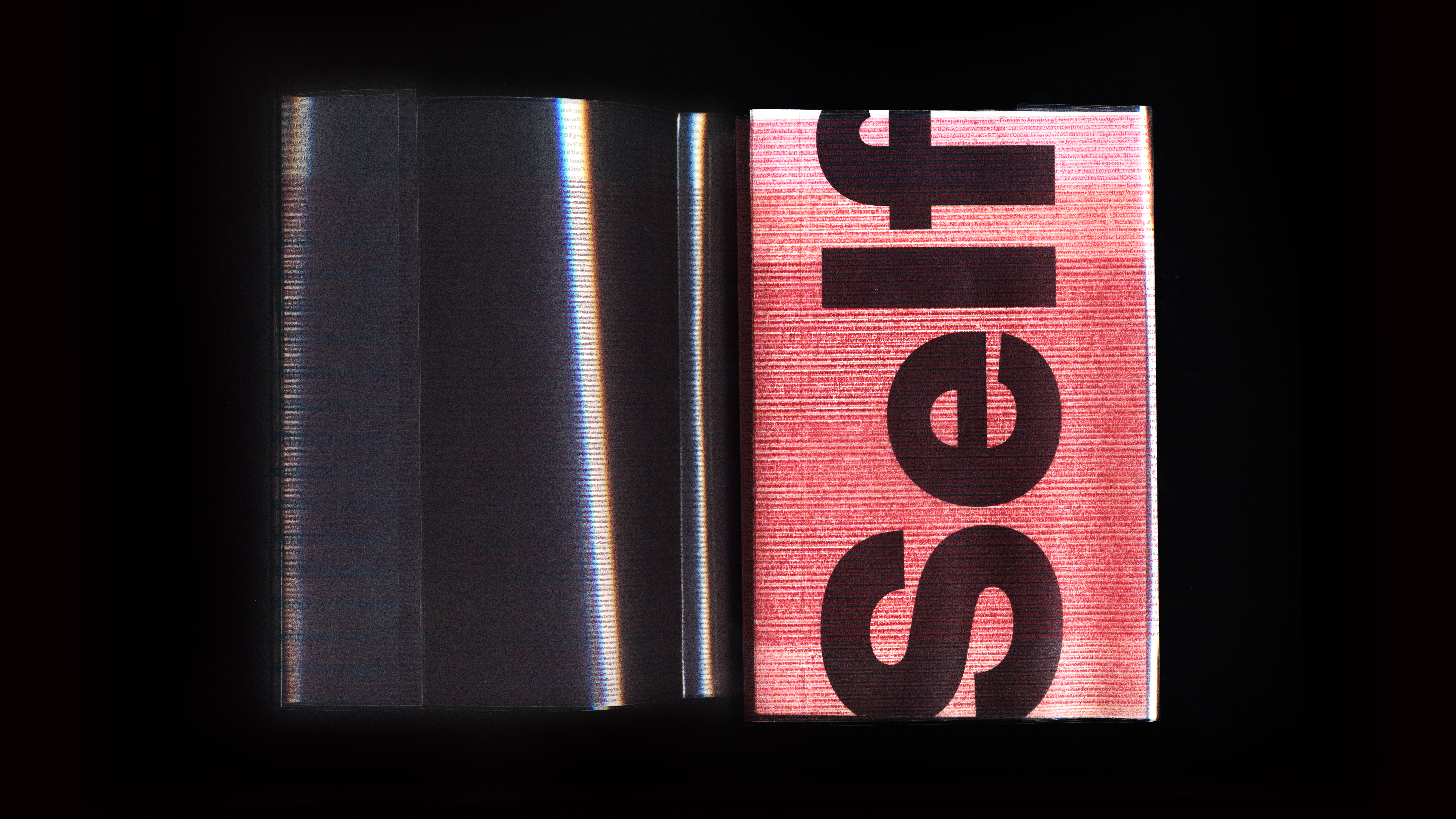
My intention with presentation of this content (physically rather than digitally) was to transform it from self-projective to self-reflective. Removing complete archive of my Twitter account from its native container and familiar, active interface and placing it in a new context reveals frivolity, fragility, and inconsistency; outside of its usual networked environment, this collection suddenly pales.
I hope that observing this process can result in a similar kind of reflection for the reader. Do the things we say on the internet accurately represent us? What does the collected output of years of usage look like? After filtering the trendy internet jargon, reductive fads, trying-too-hard jokes and digital facades, what is left?
I hope that observing this process can result in a similar kind of reflection for the reader. Do the things we say on the internet accurately represent us? What does the collected output of years of usage look like? After filtering the trendy internet jargon, reductive fads, trying-too-hard jokes and digital facades, what is left?
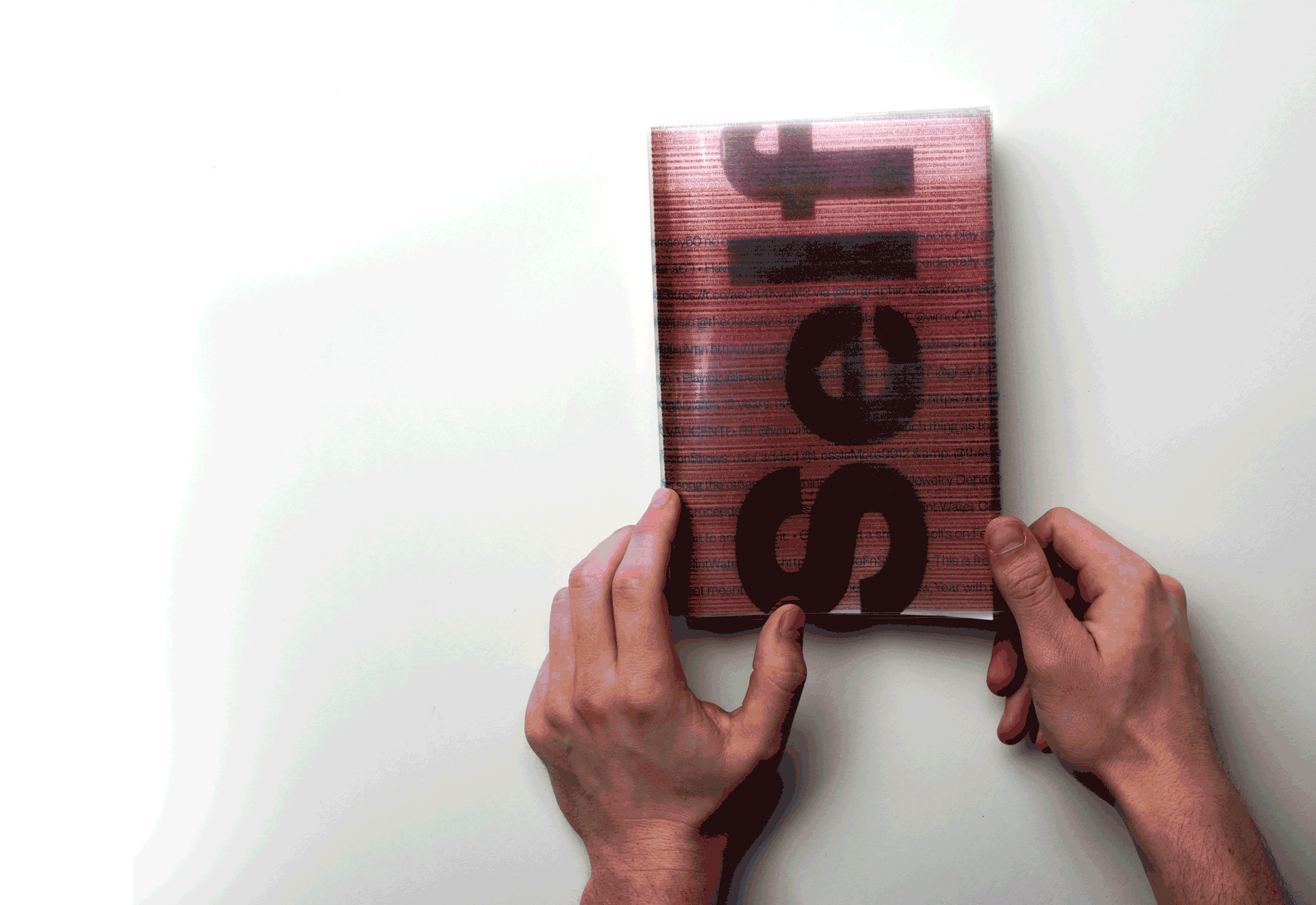

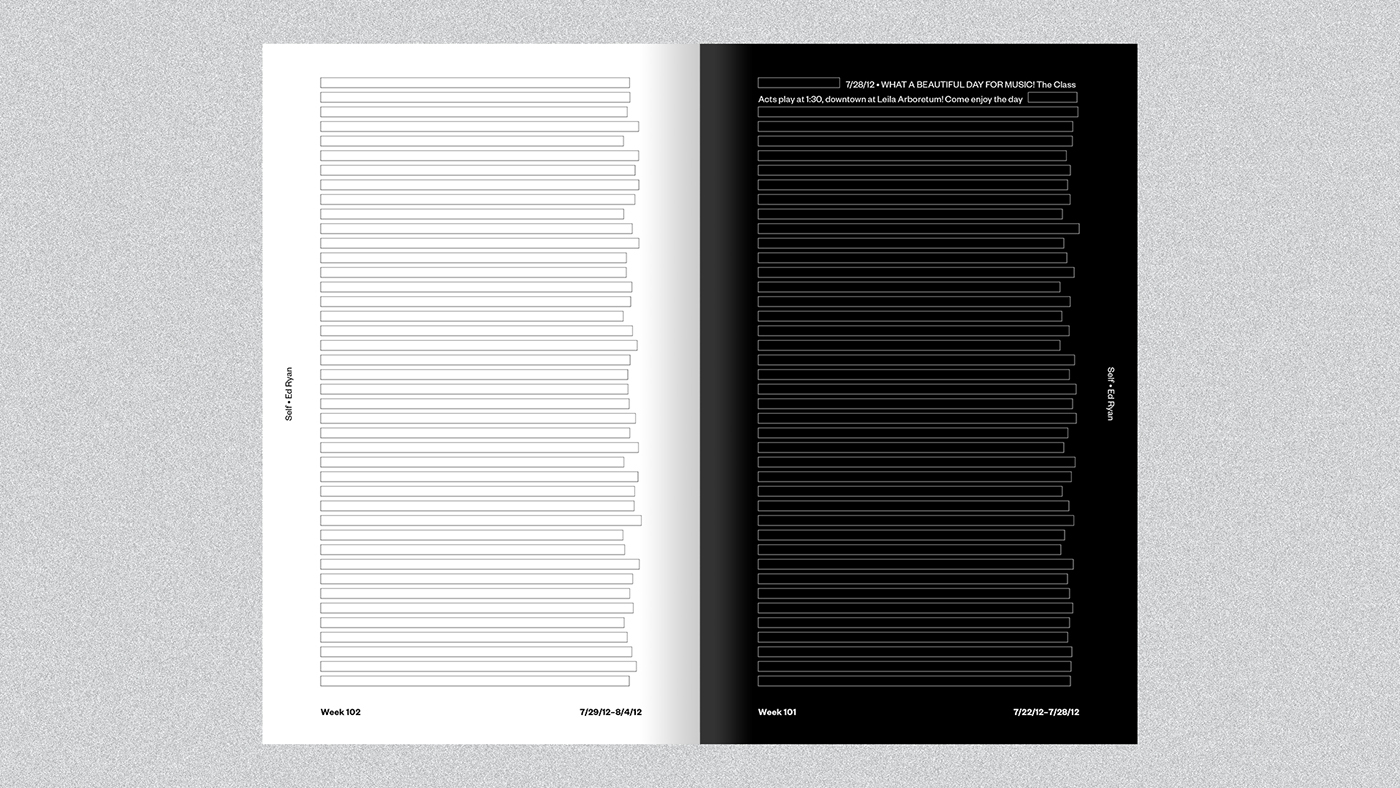

The pages of the book are intentionally sparse. Horizontal bars of “placeholder text” stand in for redacted tweets that, during review of my data, I felt deserved deletion. The only lines of real type are the few “important” tweets which I’ve concluded are still worth something—memories, thoughts, or jokes that I felt stood out from the mass of digital spew. This sparseness aims to illustrate the infrequency with which daily Twitter usage generates meaningful output.
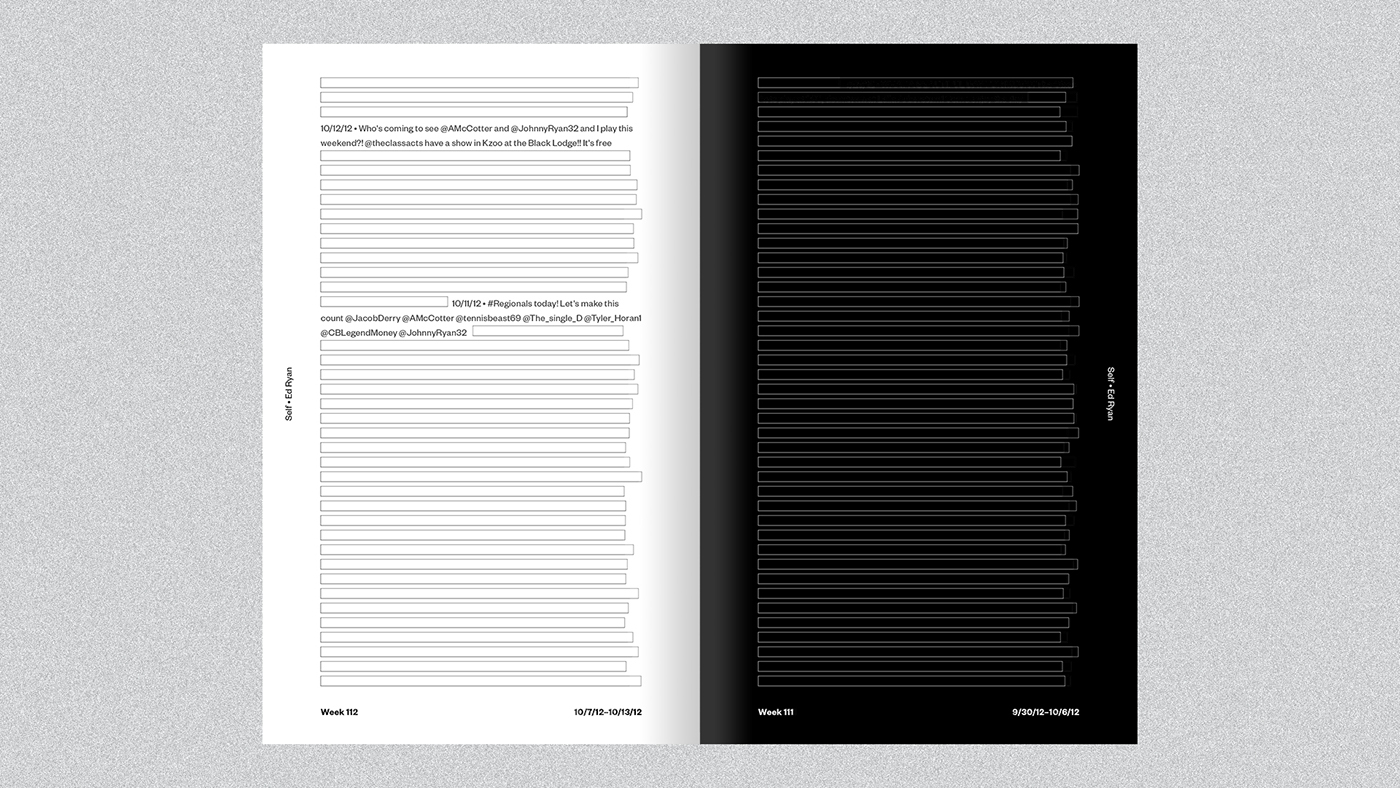
Process
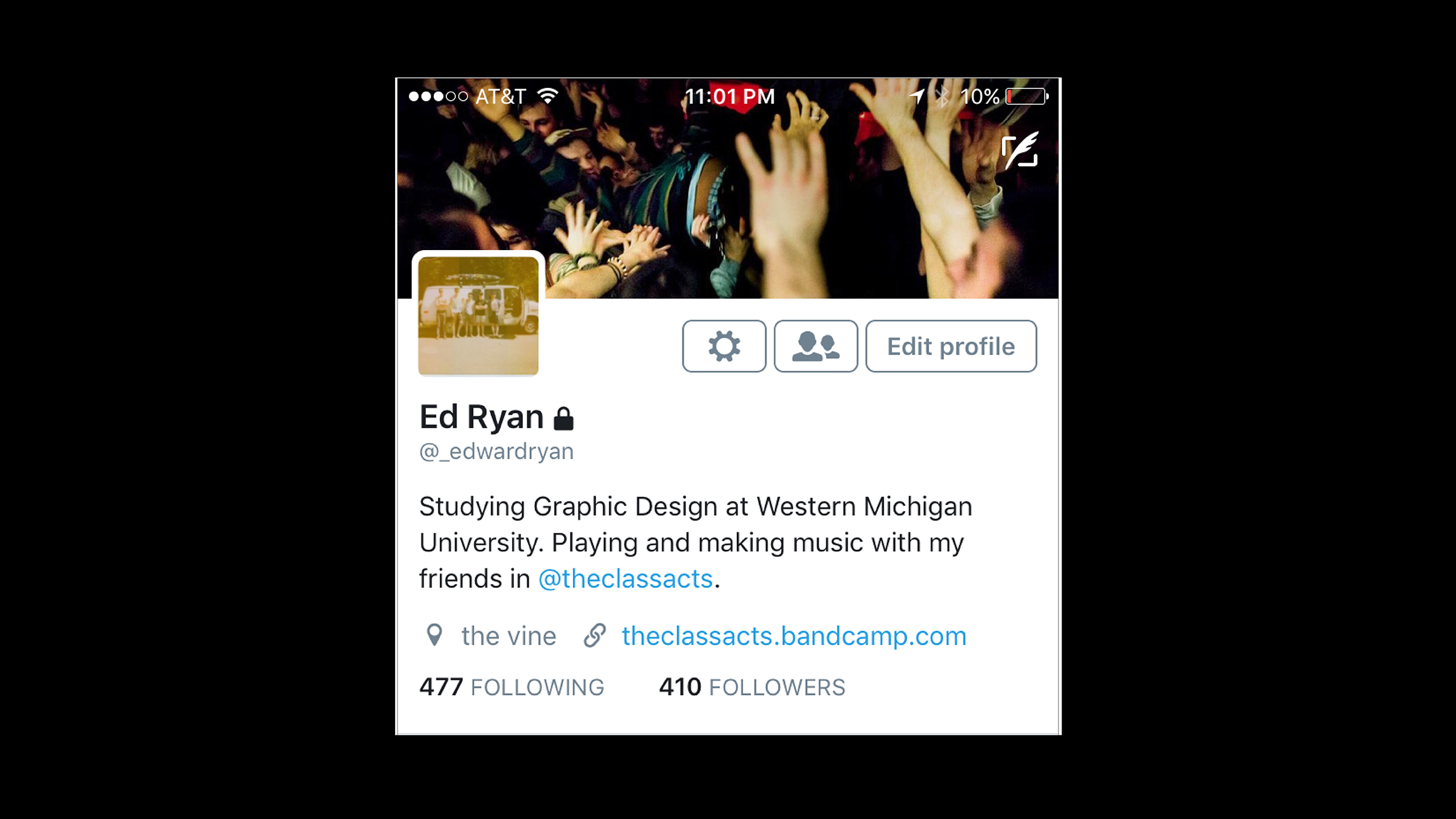

The complete contents of my Twitter served as data for the book. This data was run through Basil.js with a custom javascript to interface directly with InDesign. See a video below of the generation of the interior of the pages.
